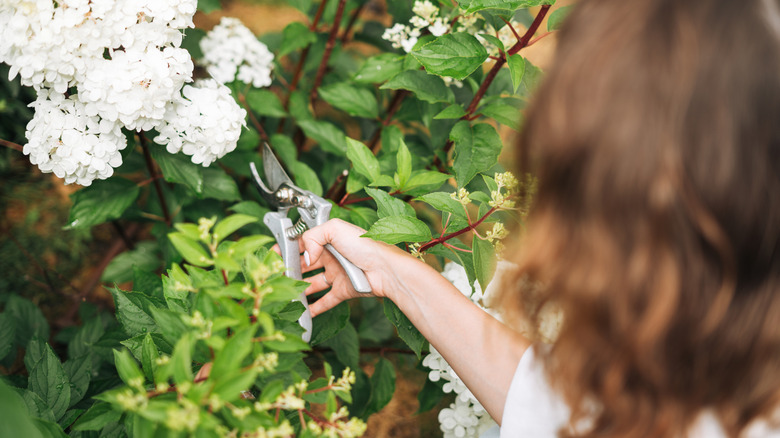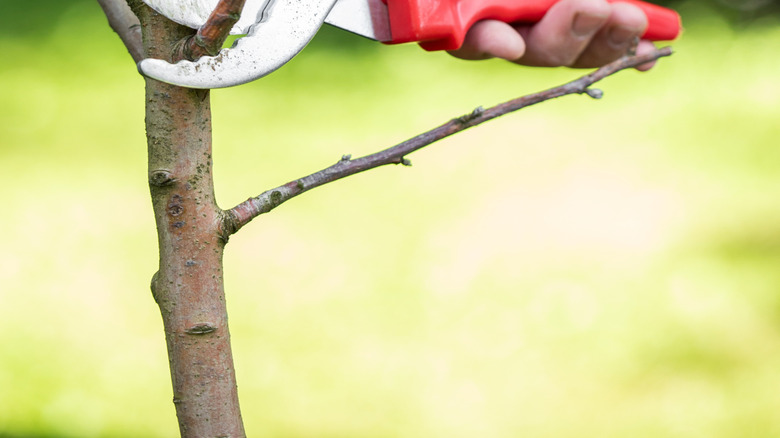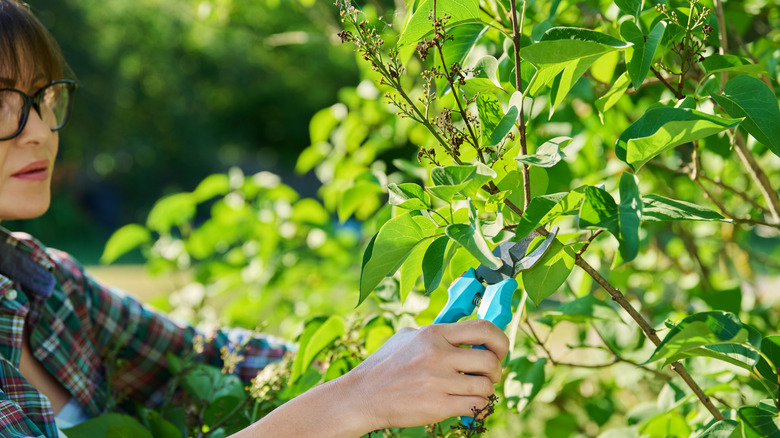Just Remember The Three D Rule To Properly Prune Your Plants
Pruning often feels like the most intimidating gardening job. It's easy to hesitate, standing over your plant with shears in hand, worried that one wrong snip could ruin it forever. The good news is that you don't need much experience to start trimming. If you want to stop guessing, avoid common pruning mistakes, and start cutting with confidence, all you have to do is remember the three D rule: dead, diseased, and damaged.
The first thing you should do is cut off any part that falls into one of these categories. Following these steps helps the plant direct nutrients away from damaged areas and toward healthy growth. Removing the dead, diseased, or damaged parts is about keeping the plant healthy, not about making the plant smaller or shaping it. When working with vegetables, some gardeners use an additional D, removing any leaves or stems that are dragging on the ground. This reduces the chances of soil-borne diseases transferring to the plant. Whether you are caring for vegetables, trees, flowers, or bushes, pruning them keeps them healthy.
Gear up and get the angle right
Once you know what to remove, the next step in pruning your trees the right way is making sure you have the correct tool for the job. Using the wrong kind of shear can tear the plant, leading to ragged wounds that attract bugs or infection. For most smaller branches, those measuring up to three-quarters of an inch across, a quality pair of hand pruners is what you need. Bypass pruners, which cut like scissors, are typically considered better than anvil styles, which tend to crush the stem against a flat plate.
When you move to thicker branches, those up to one and a half inches wide, you'll need lopping shears. These tools have long handles that give you the leverage to slice through thicker wood without straining your hand. Any piece of wood larger than that will need a saw. Sanitizing your tools is also an important part of pruning. If you just trimmed a diseased branch, you'll need to sterilize your cutters before moving to the next plant. Wiping down the blades with rubbing alcohol or a product like Lysol helps prevent accidental spread of disease.
Finally, pay attention to the exact place you make the cut. To remove a branch completely, cut just outside the branch collar. This is the slight swelling at the base where the branch meets the main trunk. This collar has cells that quickly seal off the open cut. Cutting too far away leaves a stub that won't heal, while cutting too close removes the protective collar entirely.
Timing the healthy cuts
It's true that you can safely remove a dead, diseased, or damaged branch at any point during the year, but if you're trimming healthy wood for shaping or size control, you need to pay attention to the calendar. When you prune a healthy branch depends on the plant's blooming time. The trick is to figure out whether the plant produces flowers on old wood (last year's growth) or new wood (this year's growth).
Shrubs that bloom in early spring, like forsythia, lilac, and rhododendron, all flower on old wood. To get the best flowers, you should prune these right after the blossoms fade in the spring. Pruning them in winter or early spring removes the buds set the previous fall, resulting in no flowers that year.
On the other hand, summer-flowering shrubs, such as crape myrtle and potentilla, bloom on new wood. You should prune these during the dormant season in late winter or very early spring before new stems appear. This technique allows the stems to grow and then flower later in the summer. Some flowering plants should be pruned in the fall, like phlox, lilies, and bee balm. No matter the season or the plant, never remove more than one-third of the plant's total foliage at one time. This helps minimize stress and makes sure the plant can recover quickly from its trim.


